855 TITLING THE PASTORAL BREEDS
TITLING THE PASTORAL BREEDS
by David Hancock
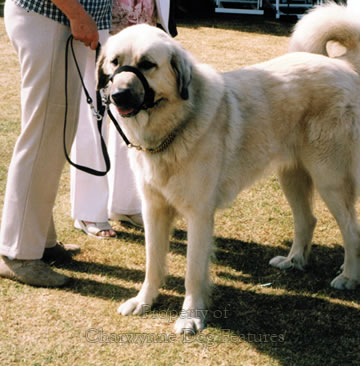 Breed Titles
Breed Titles
I do wish the kennel clubs of the world would get their act together over the nomenclature used for pastoral breed titles. The flock guarding breeds, like the Anatolian Shepherd Dog, should not be called ‘shepherd dogs’; the herding breeds like the Belgian and Dutch Shepherd Dog breeds are best described by this title. But when is a sheepdog not a shepherd dog? Is there a difference in role here? The Pyrenean pastoral breeds make a point for me: the biggest, the Pyrenean Mountain Dog is the flock guardian, with the size and role of the Hungarian Kuvasz; the next down in size, and on the Spanish side of the range, but more fiercely protective is the Pyrenean Mastiff, a shepherd’s mastiff, with the size and role of the Tibetan Mastiff; then comes the Pyrenean Sheepdog, a much smaller, much more active herding breed, but appreciably smaller and with a different role from our Old English Sheepdog. Breed titles should reflect breed purpose. Their role gave them their phenotype, their temperament and their nature. These are breed points as, if not more, important than show ring breed points, such as skull shape and ear and tail carriage. Breed type originated in function not appearance.
A further complication is the breed titles imposed on the pastoral breeds from outside. The Tibetans do not call their flock protector a ‘Tibetan Mastiff’, the Polish do not call their Tatra Mountain Dog by that label, the Roumanians do not call their Carpathian Sheepdog a Mountain Dog despite its mountain pastures, the St Bernard of today was the Alpine Mastiff of yesterday and the Sar Planina works in the mountains of that name but is not called a mountain dog here, unlike the Pyrenean equivalent. I suspect that the noun ‘mastiff’ has become shorthand for big strapping dogs out of the long-held view, especially in North America, that mastiffs are today’s molossers. They are not; the Mollossi, of Epirus in Ancient Greece, had two sorts of big dog, one was a flock protector, the other a hound. The mastiffs of their time came from Hyrcania and were referred to as ‘Indian Dogs’; scholars have since misused the mastiff to cover every large dog in ancient writings. The Swiss use the word ‘sennenhund’, or dog of the high pastures, for their livestock protection dogs. The FCI should really differentiate between mountain dogs, steppe dogs and plains dogs; their anatomies are different as is their coat texture. Breed identity can help in its long-term survival, as the Lancashire Heeler demonstrated. 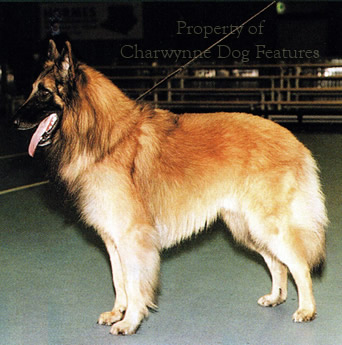
I believe that our breeds of domestic dog are in unprecedented danger, not from one single distinct threat and not next year or the one after, but from a multiplicity of menaces over the next two decades. Some breeds, like the Smooth Collie, the Sealyham Terrier, the Sussex and Field Spaniels, the Cardiganshire Welsh Corgi and the Lancashire Heeler could simply fade away because of lack of numbers. Already there is concern over their immediate future. Their registrations in 2012 reveal the cause of this concern: 88 Smooth Collies, 76 Sealyhams, 74 Sussex Spaniels, 94 Cardigan Corgis and 47 Field Spaniels; each is now an endangered species. Breeds we have imported, like the Maremma Sheepdog, with only 25 registrations in 2012, could also disappear from our breed list. There are quite a number of imported pastoral breeds just not making ground here, after the initial enthusiasm for them faded.
Unlike some countries, Denmark, Portugal and Japan for example, we lack a society devoted to the perpetuation of our threatened native breeds of dog. We have already lost the English White Terrier, the Smithfield Sheepdog, the Glenwherry Collie, the Welsh Hillman and the Llanidloes Setter and only just saved the Irish Wolfhound, the Mastiff, the Field Spaniel and the Lancashire Heeler. Only in the late 20th century did the best working collie breed in the world gain interest from the show fraternity, with the Border Collie going from 700 registrations in 1980 to over 2,000 twenty years later. Many less gifted foreign herding breeds were registered with our KC before this important national breed. But it is worth noting that in 1970, there were no registrations here of Anatolian Shepherd Dogs, Belgian Shepherd Dogs, Bernese Mountain Dogs, Briards, Hungarian Pulis or Maremma Sheepdogs. Another half a dozen pastoral breeds being favoured now were not even recognized by our KC then. Human fickleness does not assist breed stability. 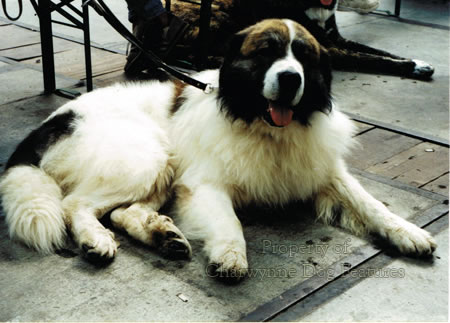
Perils of Over-popularity
Paradoxically, another serious threat comes from the unwise over-breeding of certain over-popular breeds: German Shepherd Dogs (over 8,000 registered annually), Rough Collie (8,462 in 1979), Shetland Sheepdogs (5,872 in 1969) and Pembroke Welsh Corgis (4,165 in 1969). (The last three breeds had very different figures in 2012: 943, 1,085 and 333 respectively, indicating the sheer fickleness of the show dog world.) I don't recall seeing as many badly bred specimens in these breeds as I did in the 1990s. Too many under-standard bitches are being bred from; too many faulty or weedy pups are being retained. Glamorous pastoral breeds like the Rough Collie, the Shetland Sheepdog and the Bearded Collie have become victims of the show ring – being prized for coat. The Shetland Sheepdog attracted over 5,000 registrations a year throughout the 1970s. The Bearded Collie went from 3 registrations in 1951 to nearly 2,000 in 1989. Fine working breeds like the German Shepherd Dog have suffered from over-popularity, (over 21,500 in 1985), with the faddists altering the breed from its prototypal phenotype. The specimens I used to admire when working in Germany in the 1960s lost their level toplines and effortless movement based on powerful hindquarters. The ‘banana-backs’ became favoured and crippled dogs actually became desirable as misguided ‘gaiting’ or racing around the show ring with all the power in the front legs, (that is, being pulled along instead of being pushed by the hindquarters, as nature intended), developed into the only acceptable form of movement – just for this breed! They deserved better. The best ‘GSD’ I have seen in recent years was a variation developed as the East European Shepherd, Russia’s most popular breed. The brace I saw at the World Dog Show in Budapest was truly impressive. Now, the Thames Valley Police Dog Unit are producing their own 'GSDs' and should be congratulated on their work - their dogs are truly impressive too in their own right. 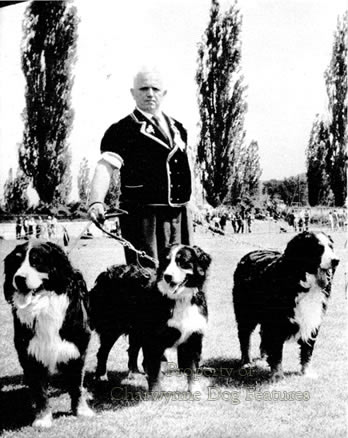
The Multi-purpose Farm Dogs
In his Farmers in Prehistoric Britain of 2011, Francis Pryor writes: “Sheep are well-known for being worked with dogs in the open, but it is less generally known that dogs are very useful in the farmyard too. Daily during winter I use my dog to remove animals from an area where I want to replace food; when the fly season starts I use her to move stock towards the dip bath…On my own, I would be hard-pressed to persuade unwilling ewes to take their annual bath, but my border collie, Jess, has powers of persuasion in her raptor-like eyes that I simply do not possess.” In her charming and beautifully illustrated Rural Portraits – Scottish Native Farm Animals, Characters and Landscapes of 2003, Polly Pullar writes: “It can be very hard to find a good all round dog that does everything required of it. Some farmers end up with many collies, each suited to a particular type of sheep work. The best dogs on a mixed farm are those that will not only single out a ewe and never lose sight of her even when she is fleeing across the heather with a huge group of others, but also help to bring in the cows.” Farm dogs have to be versatile and deserve a separate title.
In Ireland, I’ve seen the Kerry Blue and Wheaten Terriers used as multi-purpose farm dogs, able to undertake just about every canine role on the farm. Farmers overseas needed small dogs too; to control pests such as rats, to act as turnspit dogs in the farmhouse kitchen and to go to ground when foxes were hunted. The smallest could do all three tasks but had to be very small to fit into the cage round the spit and work the treadmill without too much discomfort. In Britain, the work was considered too arduous to be done on successive days and so a team of dogs was used, leading to the expression 'every dog has his day'. In Germany the Schnauzer varieties provided the range of canine skills around the farm. In Russia, the Laika breeds offered a similar versatility, the large ones acting as herders and the small ones as yard dogs and ratters. All over the world, dogs, whether employed to drive cattle, sheep, goats or reindeer, to guard farmsteads or flocks, to kill foxes or rats or 'hold' an individual animal were bred with just one object in mind: their function. This criterion, ruthlessly pursued, demanded physical and mental soundness, robustness of health and responsiveness to training. We no longer do so in the developed world and our crowded veterinary surgeries demonstrate the foolishness of this daily. 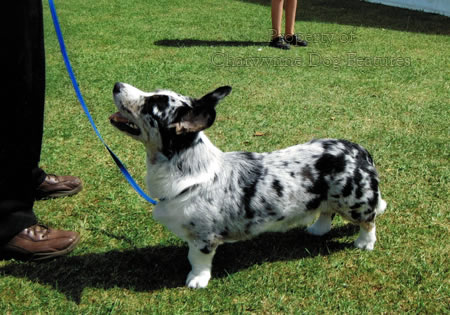
Employment as Service Dogs
Evidence of the remarkable merit of the pastoral breeds is shown daily in the way in which they are used as service dogs – all over the world, by the military, by police forces and as support dogs for the disabled or handicapped humans. Over the years, breeds used as service dogs have lost their role through being bred away from their function and into the world of the fancier. The Border Collie is widely used across many needs, based on its quickness to absorb training and willingness to work – two basic requirements in a dog of the shepherds. I do not know, however, of a Rough or Smooth Collie or of an Old English Sheepdog being used as a service dog. Is this a reflection of their lost capabilities, sheer human fickleness or, in two cases, the demands of their coat-care? I have long argued for the pastoral breeds to be bred true to type and fit for function; these may now be clichés but both expressions really do matter for the breeds concerned. They will, in my view, either survive because they retain traditional physical form and character or be lost to us through simply having no independent breed individuality and, more importantly, no purpose – and that, when their remarkable past is taken into account, would be our loss too. But how can you expect show breeders to respect function when the kennel clubs of the world don't seem able to do so in registered breeds' titles - breed names truly matter!
“…such are the dogs used in Persia to guard the flocks of sheep, such the shepherd’s dog of Natolia; but we must not suppose that they perform the duties of our shepherd’s dog, which render it so interesting – on the contrary, they are to be regarded simply as watch-dogs, defending the flocks from wild beasts and strangers, and consequently are more remarkable for other qualities than sagacity and intelligence. In the East, be it remembered, the sheep are not driven – they follow the shepherd – at least in Western Asia, Greece, etc.; but in our country the shepherd’s dog acts as drover and gatherer of the sheep together, and takes no little labour from the shepherd, to whom his dog is of the utmost importance.”
From The History of the Dog by WCL Martin, Charles Knight & Co., 1845.